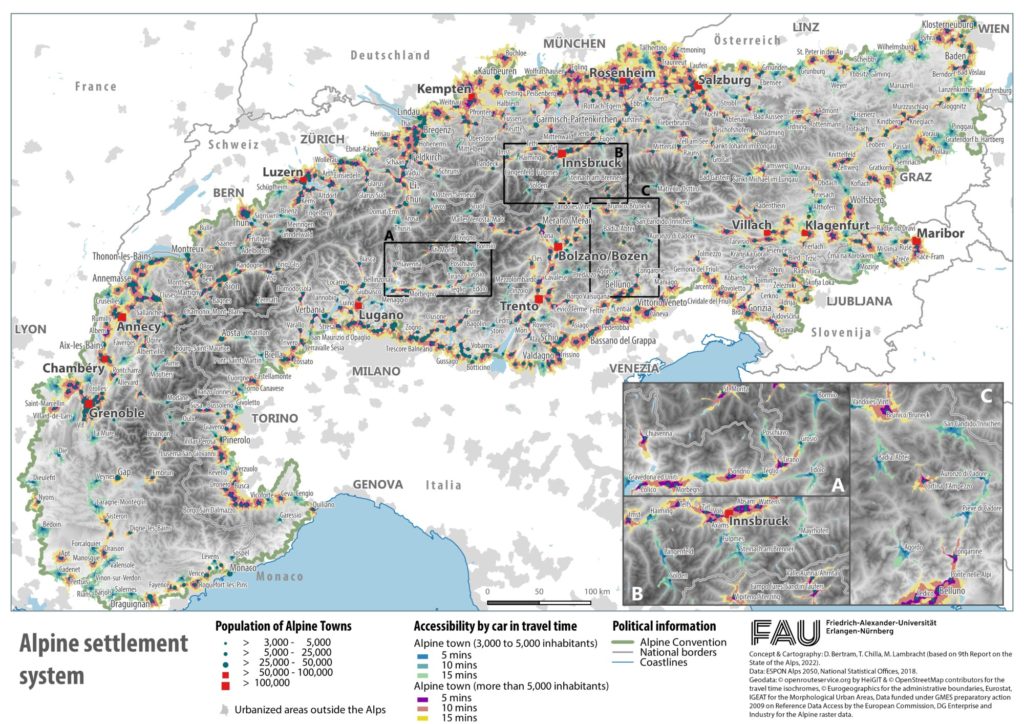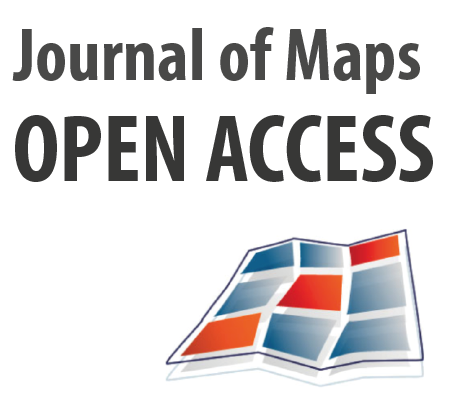The Alpine settlement system is of key relevance for sustainable development in the mountain region. However, maps on the European scale indicate almost no cities in the Alps but only a few small towns. The Alpine region seems to be an ‘empty’ space (see, e.g. Atlas for the Territorial Agenda 2030). We argue that a differentiated mapping approach should involve medium and small settlements in mountain regions, as they have a high functional importance for the surrounding area.
Our recently published article in the Journal of Maps presents an analytical mapping of the Alpine settlement system based on demographic and accessibility arguments. It reflects on two research questions: How to put Alpine towns on the map of spatial development without taking a metropolitan bias? To what extent does this approach help to overcome the ‘size problem’ of the Alpine settlement system?

—
Bertram, D., Chilla, T. & M. Lambracht (2023): The Alpine settlement system: capturing relevance beyond size. Journal of Maps. https://doi.org/10.1080/17445647.2022.2164229
—
The analysis provides three alpine-specific insights. First, the approach covers the rural area and ‘sees’ the very small Alpine towns. Second, this settlement system shows the relevance of efficient spatial organisation along valley axes. Third, the analysis illustrates the cross-border dimension of towns in spatial proximity to national borders. Overall, the paper presents a ‘new’ Alpine settlement system, gives an alternative perspective on Alpine sustainable spatial development, and provides a harmonized information base for spatial planning on a fine spatial scale.
This publication builds on results of the 9th Report on the State of the Alps, coordinated by the Swiss Presidency of the Alpine Convention.

